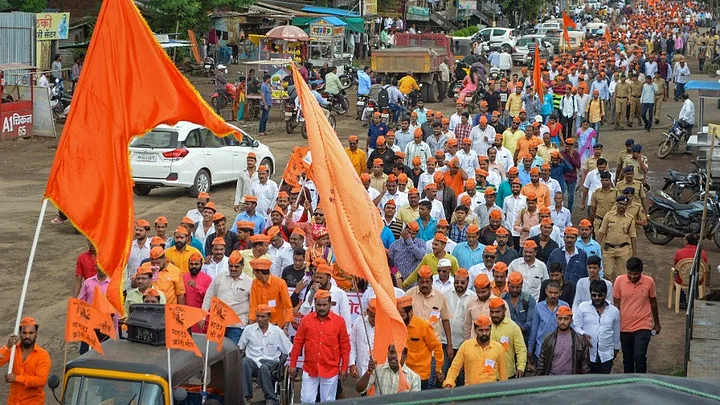The Maharashtra Assembly Thursday, 29 November, unanimously passed a bill giving 16 per cent quota to Marathas in jobs and education, which reflects importance of the community in state politics, especially when elections are near.
Marathas form 33 percent of the state's around 13 crore population. It has produced 10 out of 18 chief ministers.
Collective tenure of chief ministers from the Maratha community spans over 30 years since the state was formed in 1960.
The Maratha chief ministers of the past included political heavyweights such as the first chief minister Y B Chavan, NCP supremo Sharad Pawar, Vasantdada Patil, Shankarrao Chavan and Vilasrao Deshmukh.
Maratha voters can influence poll outcomes in around 200 of the 288 Assembly constituencies in Maharashtra.
However, the Maratha organisations seeking quota have always averred that its dominance is confined to a small section of the community.
A large chunk of Maratha population, dependent chiefly on farming, has been backward both socially and economically, the quota protesters have maintained.
The assembly passing the bill unanimously was not the first attempt towards granting reservation to the community.
Ahead of 2014 Assembly polls, then Congress-NCP government led by Prithviraj Chavan, also a Maratha, granted 16 per cent reservation to the community alongwith a five per cent quota for the Muslims through an ordinance.
The ordinance, however, was stayed by the Bombay High Court.
The campaign for quota intensified after a 14-year-old Maratha girl from Kopardi village in Ahemadnagar district was raped and murdered in July 2016.
Subsequently, over 50 silent marches were undertaken by Maratha organisations across the state in 2016 and 2017.
The agitation for quota in July this year took a violent turn with protesters slamming the government for delay in fulfilling the demand.
Some political analysts ascribe quick passage of the bill to upcoming elections.
“It’s a low-hanging fruit that the government has successfully plucked,” observed former Rajya Sabha member and veteran journalist Bharatkumar Raut.
It remains to be seen if anyone approaches courts against the bill and how the government tackles the situation then. In case courts stay the process, the situation would be back to the square one.
As much as 37.28 per cent Marathas are living below poverty line (BPL) and 93 per cent families from the community have annual income of less than Rs 1 lakh, according to the State Backward Class Commission's recent report.
Over 76 per cent of Maratha families are dependent on agriculture and farm labour, and the community has only six per cent representation in government and semi-government services, it said.
